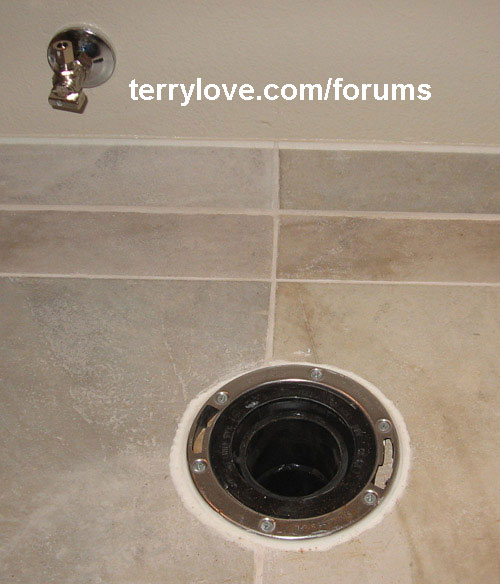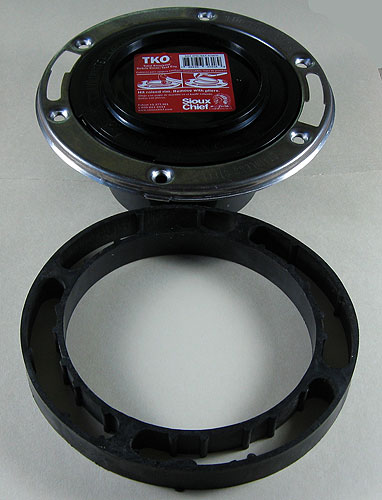CarlH
Member
I pulled a toilet today as a part of my bathroom renovation and discovered that the flange had cracked around both slots for the closet bolts. It is the open slots in the picture on the left and right sides.

I have a couple of question regarding this flange.
The most important question is, what do you recommend I do to fix this flange? The tile and underlayment will be removed before new tile will be installed, which can provide some access to the underside of the Flange.
The flange is a bit uneven. The center line puts the flange at 1/2" high, the left side at 3/8" and the right side at 5/8". This seems OK to me. Now here is the problem. I had a AS Cadet PA in this location and after I noticed the cracked flange I placed the bowl back on the flange to check the situation. The bowl rocks on the flange. I did a quick check of the bottom of the bowl and there does not seem to be 1/2" difference between the outside lip of the base and the recess all the way around the horn. Is this typical for this bowl, a defect, or is the flange too high?

I have a couple of question regarding this flange.
The most important question is, what do you recommend I do to fix this flange? The tile and underlayment will be removed before new tile will be installed, which can provide some access to the underside of the Flange.
The flange is a bit uneven. The center line puts the flange at 1/2" high, the left side at 3/8" and the right side at 5/8". This seems OK to me. Now here is the problem. I had a AS Cadet PA in this location and after I noticed the cracked flange I placed the bowl back on the flange to check the situation. The bowl rocks on the flange. I did a quick check of the bottom of the bowl and there does not seem to be 1/2" difference between the outside lip of the base and the recess all the way around the horn. Is this typical for this bowl, a defect, or is the flange too high?



